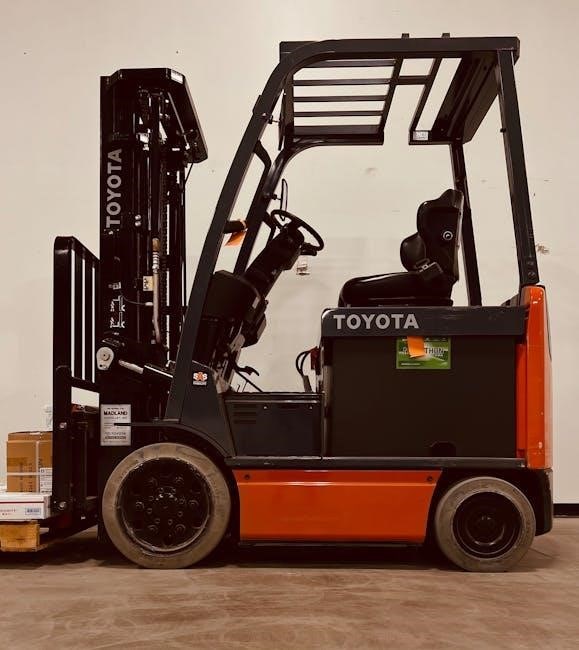Free comprehension de lecture 3e année pdf resources are available online for teachers and students to improve reading skills and knowledge with various exercises and activities every day naturally․
Definition and Importance
Comprehension de lecture 3e année refers to the ability of students to understand and interpret written texts, a crucial skill for academic success․
The importance of comprehension de lecture 3e année lies in its ability to enhance students’ overall reading proficiency, critical thinking, and analytical skills․
With free online resources, such as pdf documents, teachers can create engaging lesson plans that cater to different learning styles and abilities․
These resources provide a comprehensive approach to teaching comprehension de lecture 3e année, covering various aspects of reading comprehension, including vocabulary, grammar, and text analysis․
By emphasizing the importance of comprehension de lecture 3e année, educators can help students develop a deeper understanding of written texts and improve their academic performance․
Effective teaching methods and strategies can make a significant difference in students’ ability to comprehend and analyze written texts, leading to better academic outcomes․
Overall, comprehension de lecture 3e année is a vital component of language arts education, and its importance cannot be overstated․
It plays a critical role in students’ academic development and future success․
Free Resources Available
There are numerous free resources available online for comprehension de lecture 3e année, including pdf documents, worksheets, and activity sheets․
These resources can be easily accessed and downloaded, providing teachers and students with a wealth of materials to support learning․
Many websites offer free comprehension de lecture 3e année resources, such as printable worksheets, reading comprehension exercises, and vocabulary building activities․
Some websites also provide interactive resources, including online quizzes, games, and puzzles, to make learning more engaging and fun․
Additionally, many educational institutions and organizations offer free resources, including lesson plans, teaching guides, and assessment tools․
These free resources can be used to supplement classroom instruction, provide extra support for struggling students, or offer additional challenges for advanced learners․
With so many free resources available, teachers and students can access high-quality materials without incurring significant costs․
These resources can be used to create a comprehensive and engaging learning program for comprehension de lecture 3e année․
Types of Exercises and Activities
Various exercises and activities, including reading comprehension and vocabulary building, are available for students to improve skills naturally every day․
Récits and Textes Informatifs
Free resources for récits and textes informatifs are available online, including exercises and activities to improve reading comprehension skills for 3e année students․
These resources include a variety of texts, such as stories and informational passages, that can be used to assess students’ ability to understand and interpret written language․
The exercises and activities are designed to be engaging and challenging, and can be used in the classroom or as homework assignments․
They cover a range of topics and themes, and are suitable for students of different ages and abilities․
By using these resources, teachers can help their students develop their reading comprehension skills and improve their overall understanding of French language and culture․
The resources are easy to access and can be downloaded in pdf format, making them a convenient and useful tool for teachers and students alike․
They are also regularly updated to ensure that they remain relevant and effective․
Nutrition-themed Comprehension
Nutrition-themed comprehension exercises are available for 3e année students, focusing on the importance of healthy eating and nutrition․
These exercises include texts and activities that teach students about different food groups, meal planning, and the benefits of a balanced diet․
The resources are designed to be engaging and easy to understand, with colorful illustrations and simple language․
They can be used in the classroom or at home, and are suitable for students of different ages and abilities․
The nutrition-themed comprehension exercises are a great way to teach students about the importance of healthy eating, while also improving their reading comprehension skills․
The exercises are available in pdf format and can be downloaded for free from various online resources․
They are a valuable tool for teachers and parents who want to educate their students about nutrition and healthy eating habits․
The exercises are fun and interactive, making learning about nutrition an enjoyable experience․
Teaching Methods and Strategies
Effective teaching methods include classroom-based exercises and visual aids to improve comprehension skills naturally every day with online resources and pdf materials available for teachers․
Classroom-based Exercises
Classroom-based exercises are an essential part of teaching comprehension de lecture 3e année, offering a range of activities to engage students and improve their reading skills․
These exercises can be adapted to suit different learning styles and abilities, making them accessible to all students․
With the use of online resources and pdf materials, teachers can create a variety of exercises, such as reading comprehension passages, vocabulary building activities, and critical thinking exercises․
By incorporating these exercises into their teaching practice, educators can help students develop a deeper understanding of texts and improve their overall comprehension skills․
Additionally, classroom-based exercises provide an opportunity for students to work together, share ideas, and learn from one another, fostering a collaborative and supportive learning environment․
This approach enables teachers to assess student progress and provide targeted support where needed, ensuring that all students have the opportunity to succeed․
Using Visual Aids and Real-life Examples
Using visual aids and real-life examples is a highly effective way to teach comprehension de lecture 3e année, as it helps students to connect the material to their everyday lives․
By incorporating images, diagrams, and charts into lessons, teachers can make complex concepts more accessible and engaging for students․
Real-life examples, such as stories and case studies, can also be used to illustrate key points and make the material more relatable․
This approach can be particularly helpful for students who are visual learners or who struggle with abstract concepts․
Online resources, including pdf materials, can provide a wealth of visual aids and real-life examples that teachers can use to support their teaching․
By using these resources, educators can create a more interactive and engaging learning environment, which can help to improve student outcomes and increase motivation․
This approach can also help students to develop a deeper understanding of the material and to apply it in practical contexts․
Assessment and Evaluation
Teachers evaluate student progress using quizzes and tests with online pdf resources available for comprehension de lecture 3e année assessment and evaluation purposes daily․
Épreuves de Compréhension
Comprehension tests, or épreuves de compréhension, are designed to assess students’ understanding of reading materials․ These tests can be used to evaluate students’ abilities to comprehend and interpret texts․ Online resources, such as pdf files, provide teachers with a range of comprehension tests suitable for 3e année students․ The tests typically include a reading passage followed by questions that require students to demonstrate their understanding of the text․ The questions may be multiple-choice, short-answer, or essay-style, and are designed to assess students’ comprehension skills, such as identifying main ideas, making inferences, and understanding vocabulary․ By using these tests, teachers can identify areas where students need additional support and provide targeted instruction to improve their comprehension skills․ The tests can be administered in a classroom setting, and the results can be used to inform instruction and adjust teaching strategies․
Correction and Feedback
Providing correction and feedback is a crucial step in the learning process for 3e année students․ Teachers can use online resources, such as pdf files, to access correction keys and feedback guides․ These resources help teachers to accurately assess student comprehension and provide constructive feedback․ The correction keys allow teachers to identify areas where students need improvement, while the feedback guides provide suggestions for how to support students in developing their comprehension skills․ By using these resources, teachers can provide targeted feedback that helps students to understand their strengths and weaknesses, and to develop strategies for improving their comprehension․ Effective correction and feedback can have a significant impact on student learning outcomes, and can help to build students’ confidence and motivation․ Teachers can use the feedback to inform instruction and adjust their teaching strategies to better meet the needs of their students․



















